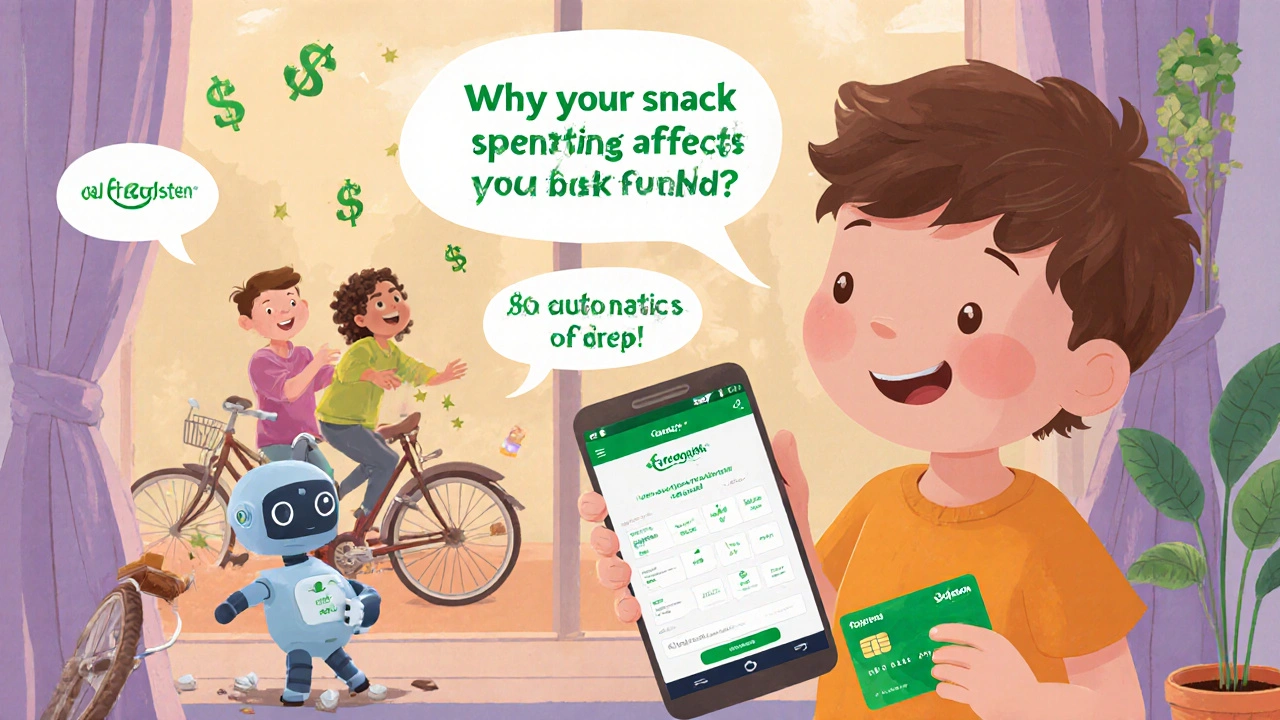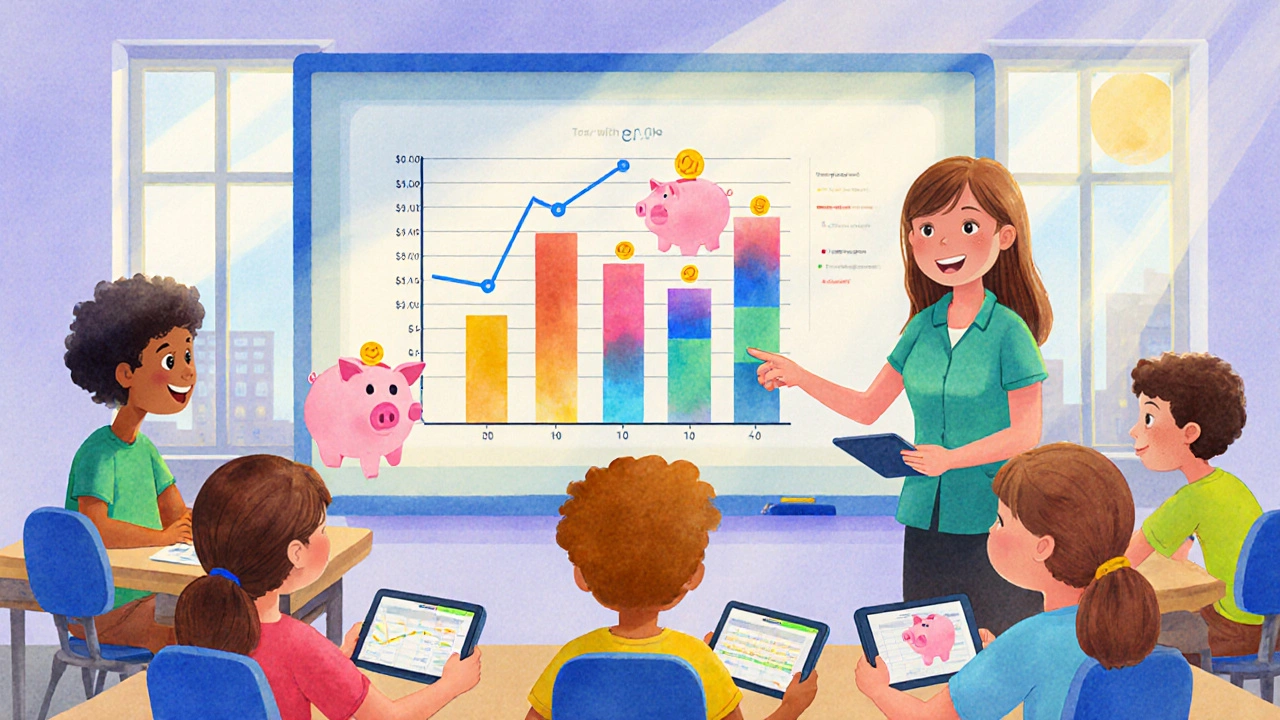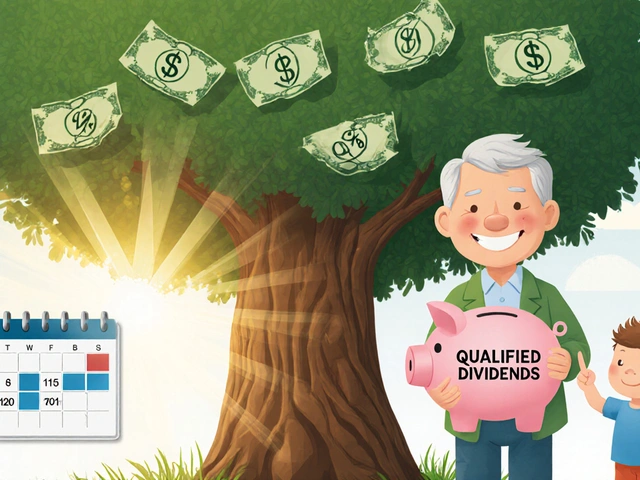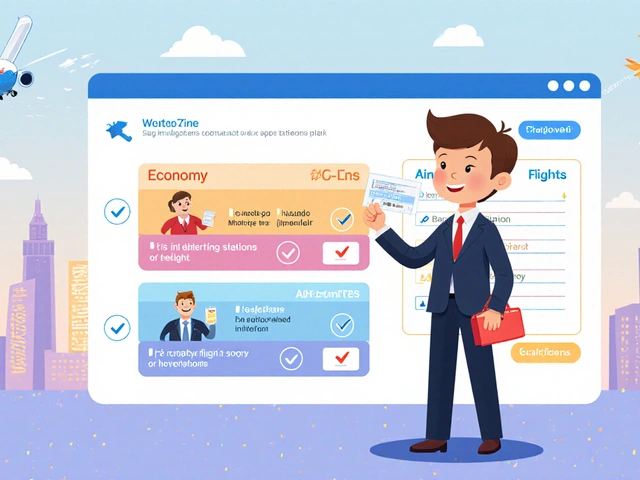Why Students Need Fintech and Personal Finance Skills Today
Most teens don’t know how to read a bank statement. They’ve never balanced a checkbook. They’ve seen TikTok ads for crypto apps but don’t understand what a credit score actually does. This isn’t because they’re careless-it’s because fintech and personal finance have changed faster than schools can keep up.
In 202023, 73% of U.S. adults used mobile banking. That’s up from 42% in 2015. Kids today pay for lunch with Apple Pay, split rent with Venmo, and track spending with apps like Greenlight or Chime. But in most classrooms, they’re still learning about check registers from 1998. The gap isn’t just outdated-it’s dangerous.
According to the National Financial Educators Council, U.S. adults lost $487.9 billion in 2022 due to poor financial decisions. That’s not because people are bad with money-it’s because they never learned how to manage it in a digital world. And if schools don’t teach it, who will?
What’s Actually Taught in Today’s Classrooms
There are three main types of personal finance curricula in U.S. schools today-and only one of them is starting to catch up with reality.
Traditional curricula focus on budgeting, saving, interest rates, and credit. These are still essential. Programs like the Federal Reserve’s Making Personal Finance Decisions teach students how to use the PACED method: Problem, Alternatives, Criteria, Evaluation, Decision. It’s solid theory. But it doesn’t mention apps, digital wallets, or peer-to-peer lending.
Scenario-based programs like Banzai are where real learning happens. Students get thrown into real-life situations: a car breaks down, a roommate doesn’t pay rent, a surprise medical bill shows up. They make choices, face consequences, and learn from mistakes-all without real money on the line. Banzai’s system has been used in over 12,000 schools. Students who go through it show an average 38.5-point improvement on post-tests. That’s not a small win.
Fintech-integrated curricula are the new frontier. Greenlight for Classrooms, launched in September 2023, offers 100+ lessons mapped to state standards for grades K-12. It doesn’t just teach budgeting-it shows how digital banking works. Students learn how to use a prepaid debit card linked to a parent’s app, how to set savings goals with automated transfers, and how to avoid overdraft fees in real time. Greenlight’s platform syncs with the actual Greenlight app used by 5.8 million families. That’s not simulation-it’s real-world practice.
Why Fintech Can’t Be Ignored Anymore
Let’s be clear: fintech isn’t just about crypto or NFTs. It’s about how money moves today.
PayPal, Zelle, Cash App, Klarna, Afterpay-these aren’t optional extras. They’re how people pay for things. Students need to understand:
- How buy-now-pay-later affects credit scores
- Why apps like Robinhood can make investing look easy but hide real risk
- What happens when a digital wallet gets hacked
- How algorithms track spending and push targeted ads
A 2023 study from the FINRA Foundation found that students who took personal finance classes had 18.7% higher credit scores by age 25. But that only works if the class includes modern tools. If you’re teaching about credit cards but never mentioning digital credit, you’re setting students up to fail.
Even state governments are catching on. In 2022 and 2023, 11 states-including Florida, Missouri, and Utah-passed laws requiring crypto and blockchain education as part of financial literacy. That’s not because every kid needs to trade Bitcoin. It’s because they need to understand how digital ledgers work, how identity verification happens online, and why some apps charge hidden fees.

What Works-And What Doesn’t
Not all programs are created equal. Here’s how the top players stack up:
| Program | Grade Range | Fintech Coverage | Hands-On Tools | Certification | Teacher Prep Time |
|---|---|---|---|---|---|
| Greenlight for Classrooms | K-12 | High (digital banking, mobile payments, savings apps) | Yes (syncs with real Greenlight app) | No | 2-4 hours |
| Banzai | 6-12 | Low (no crypto or blockchain) | Yes (interactive scenarios) | No | 3-5 hours |
| Intuit for Education | 9-12 | Moderate (tax software, budgeting tools) | Yes (Quicken, Mint simulations) | Yes (Certiport certification) | 5-7 hours |
| Federal Reserve Curriculum | 9-12 | Very Low | No | No | 7-10 hours |
| FDIC Money Smart | K-2 | None | Activity books, games | No | 1-2 hours |
Greenlight leads in accessibility and real-world relevance. Banzai wins for engagement. Intuit offers credentials that look good on college apps. But only Greenlight connects directly to the tools students already use.
Teachers Are Overwhelmed-Here’s How to Fix It
Here’s the hard truth: 75% of teachers say students rarely learn personal finance in school. Why? Because they’re not trained, not supported, and not given time.
A 2023 survey found that only 29% of personal finance teachers had received any specialized training. Most are social studies or math teachers who got handed a textbook and told to “figure it out.”
But you don’t need to be a financial expert to teach this. You need:
- Clear, ready-to-use lesson plans
- Short videos that explain concepts in 5 minutes
- Tools that auto-grade student responses
- Support that’s actually available
Greenlight offers live chat support from 8 a.m. to 8 p.m. EST, with a 92% first-contact resolution rate. Banzai has step-by-step video guides rated 4.8 out of 5 by teachers. The Federal Reserve’s guides are thorough-but they’re 50 pages long. Teachers don’t have time for that.
Start small. Pick one module. Try a single Banzai scenario. Use Greenlight’s free resources for one unit. You don’t need to overhaul your whole year. Just start showing students how money works in the real world.

What’s Next: AI, Equity, and the Digital Divide
The future of financial education isn’t just about adding crypto lessons. It’s about making sure every student gets access.
Right now, urban schools spend $18.75 per student on financial education. Rural schools spend $8.22. One in five students doesn’t have reliable internet at home. That’s not just unfair-it’s a systemic failure.
But change is coming. The U.S. Department of Education just launched a $2.5 million initiative to build fintech curriculum units focused on digital payments and cybersecurity. Sixty-eight percent of curriculum developers plan to use AI by 2025 to personalize lessons based on student performance.
Imagine a student who struggles with budgeting. The system notices they keep overspending on snacks. It suggests a challenge: “Save $10 this week by skipping one coffee a day.” It tracks progress. It celebrates wins. That’s not science fiction-it’s already happening in pilot programs.
The goal isn’t to turn every student into a financial advisor. It’s to give them the confidence to make one good decision after another. To avoid payday loans. To understand their first credit card statement. To know that “free” apps often cost more than they seem.
Where to Start Today
If you’re a teacher:
- Visit Greenlight for Classrooms and sign up for free resources.
- Try one Banzai scenario in your next class. It takes 45 minutes.
- Ask your principal: Can we use a district subscription to Intuit for Education? Certification matters for college apps.
- Don’t wait for perfect materials. Start with what’s free and simple.
If you’re a parent:
- Ask your child’s school: Do they teach personal finance? Is fintech included?
- Use Greenlight or another teen banking app to let your kid practice managing money.
- Watch a 10-minute video together on how credit scores work. Make it a conversation, not a lecture.
If you’re a policymaker or administrator:
- Push for mandatory personal finance courses. Only 30 states require them.
- Require that new curricula include fintech components.
- Invest in teacher training. $500 per teacher for a 12-hour course can double student outcomes.
The financial world isn’t waiting. Neither should schools.
Do students really need to learn about cryptocurrency in school?
Not to trade it-but to understand it. Cryptocurrency isn’t the point. Blockchain technology is. It’s the system behind digital wallets, secure payments, and even some bank transfers. Students need to know how digital ledgers work, why some apps charge fees, and how scams use fake crypto promises. Teaching this isn’t about encouraging speculation-it’s about building digital literacy.
What if my school doesn’t have enough devices for all students?
You don’t need one device per student. Many programs like Banzai and Greenlight work on smartphones. If your school has a computer lab, use it for one class period a week. You can also print scenario sheets from Banzai or use paper-based budgeting games. The goal isn’t tech-it’s understanding. Start with what you have.
Can I teach personal finance without being a finance expert?
Absolutely. Most teachers aren’t financial advisors. The best programs-like Greenlight and Banzai-are designed for non-experts. They come with scripts, videos, and answer keys. Your job isn’t to know everything. It’s to guide students through real situations and ask the right questions: “What’s the cost of this choice?” “What happens if you can’t pay?” “Who benefits from this app?”
Why don’t more schools teach this if it’s so important?
Three reasons: time, training, and pressure. Schools are already packed with math, reading, and standardized test prep. Teachers are expected to cover more with less support. And without state mandates, financial literacy is often the first thing cut. But that’s changing-27 states introduced new financial education laws in 2023. Momentum is building.
Is there evidence this actually works?
Yes. Students who take personal finance courses have 18.7% higher credit scores by age 25 and 14.3% lower delinquency rates, according to FINRA. Banzai students improve by 38.5 points on average. Tennessee schools saw a 22% increase in real-world financial decision-making after using the Federal Reserve curriculum. This isn’t theory-it’s measurable impact.




This is so needed. I grew up in India and no one ever taught me how to use UPI or even what an IMPS transfer was. I was 22 and still thought bank statements were printed on paper. 🤦♂️
I teach high school econ in rural Ohio, and we use Banzai every semester. The kids love the car breakdown scenario-it’s wild how many of them think you can just 'call the mechanic and pay later.' Greenlight’s integration is brilliant, but even without tech, the scenario-based approach changes everything. Just one module makes a difference.
Okay but let’s be real-Greenlight for Classrooms is the only thing that’s actually *alive* in this space. We’re not teaching kids to be bankers, we’re teaching them to survive in a world where their debit card is a QR code and their credit score is tracked by an algorithm that knows they bought 3 energy drinks last week. This isn’t finance-it’s digital citizenship. And if your school still thinks ‘budgeting’ means crayons and a jar, you’re doing them a disservice. Time to upgrade. #FintechNotFossilTech
This entire post is a masterclass in how to fix a systemic failure without screaming into the void. The fact that rural schools spend $8.22 per student while urban districts spend nearly triple isn’t just unfair-it’s criminal. And the idea that teachers are expected to teach fintech with zero training? That’s like handing someone a jet engine and saying ‘figure out how to fly.’ Greenlight’s 2-4 hour prep time? That’s the bare minimum. The Federal Reserve’s 10-hour guides? A joke. We don’t need more theory-we need actionable, accessible, and *already-built* tools. Thank you for naming the solutions, not just the problem. This should be mandatory reading for every state education board.